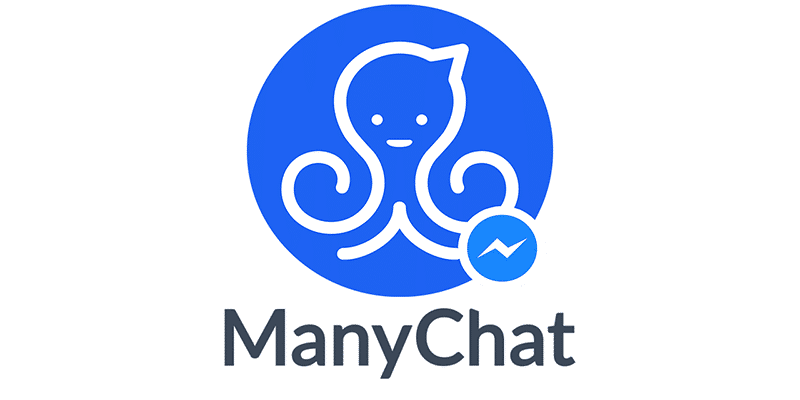
In the era of digital communication, businesses are continually seeking innovative ways to engage with their audience. Manychat, a chatbot platform, has emerged as a powerful tool in the realm of conversational marketing. This essay delves into the origins, features, applications, and impact of Manychat on the landscape of digital marketing.
I. Background and Origins:
Manychat, founded in [insert year] by [founder(s) name(s)], is a platform designed to facilitate businesses in creating and deploying chatbots on popular messaging platforms such as Facebook Messenger. The platform was developed in response to the growing importance of conversational marketing, recognizing the potential for businesses to connect with their audience in a more personalized and interactive manner.
II. Key Features:
a. Chatbot Building Interface: One of Manychat’s central features is its user-friendly chatbot building interface. Users, even those with limited coding experience, can create sophisticated chatbots using a visual drag-and-drop interface. This democratization of bot creation empowers marketers and business owners to implement automation without extensive technical knowledge.
b. Multi-Channel Support: Manychat supports integration with various messaging platforms, with Facebook Messenger being a primary focus. This multi-channel support allows businesses to engage with their audience across different platforms, broadening their reach and accessibility.
c. Sequences and Flows: The platform enables the creation of conversation sequences and flows. These automated sequences guide users through predefined interactions, providing a structured and personalized experience. Sequences can be tailored for various purposes, such as lead generation, customer support, or product recommendations.
d. Dynamic Content and Personalization: Manychat allows for the integration of dynamic content and personalization within conversations. Businesses can tailor messages based on user behavior, preferences, or demographic information, creating a more personalized and engaging user experience.
e. Broadcasts and Campaigns: Marketers can leverage Manychat to send broadcasts and run campaigns directly through messaging platforms. This feature facilitates timely and targeted communication with the audience, enhancing marketing efforts and promotional activities.
III. Applications in Marketing:
a. Lead Generation: Manychat has become a valuable tool for lead generation. Businesses can deploy chatbots on their websites or social media pages to engage with visitors, collect contact information, and qualify leads. The interactive nature of chatbots often results in higher conversion rates compared to traditional forms.
b. Customer Support: The platform is employed for automating customer support processes. Chatbots can provide instant responses to frequently asked questions, troubleshoot common issues, and escalate more complex queries to human support agents. This streamlines customer support workflows and enhances user satisfaction.
c. E-commerce and Sales: Manychat is widely used in e-commerce for driving sales and improving customer engagement. Businesses can use chatbots to recommend products, provide order updates, and facilitate transactions directly within the messaging platform. This seamless integration enhances the overall shopping experience.
d. Event Promotion and Registrations: Marketers utilize Manychat to promote events and facilitate registrations. Chatbots can send event updates, answer attendee queries, and collect registration details, simplifying the event management process.
IV. Integration with Marketing Automation:
a. CRM Integration: Manychat seamlessly integrates with Customer Relationship Management (CRM) systems, enabling businesses to consolidate and manage customer data effectively. This integration ensures that information collected through chatbots is synchronized with broader marketing and sales strategies.
b. Email Marketing Integration: The platform integrates with popular email marketing tools, allowing businesses to incorporate chatbot interactions into their broader email marketing campaigns. This integration ensures a cohesive and synchronized approach to audience engagement.
V. Challenges and Considerations:
a. User Privacy and Consent: As with any marketing tool that involves data collection, businesses using Manychat must prioritize user privacy and compliance with data protection regulations. Obtaining user consent and clearly communicating data usage policies are essential considerations.
b. Training and Maintenance: While Manychat simplifies the process of creating chatbots, businesses need to invest time in training and maintenance. Regular updates, monitoring, and refining chatbot interactions are crucial for ensuring optimal performance.
VI. Future Trends and Developments:
a. Advancements in Natural Language Processing (NLP): The future of Manychat may involve advancements in Natural Language Processing, enhancing the ability of chatbots to understand and respond to user queries more intuitively. This would contribute to a more human-like and conversational user experience.
b. AI and Machine Learning Integration: Integrating artificial intelligence (AI) and machine learning (ML) capabilities could further enhance the intelligence of Manychat chatbots. Predictive analytics and adaptive learning algorithms could enable chatbots to better understand user preferences and behavior.
Conclusion:
In conclusion, Manychat has emerged as a transformative force in the realm of conversational marketing. Its user-friendly interface, multi-channel support, and versatile applications make it a go-to tool for businesses seeking to enhance customer engagement, streamline processes, and drive marketing objectives. As the digital landscape continues to evolve, Manychat’s role in shaping the future of conversational marketing remains pivotal, and its impact is likely to grow as businesses increasingly recognize the value of personalized, interactive, and automated communication with their audience.